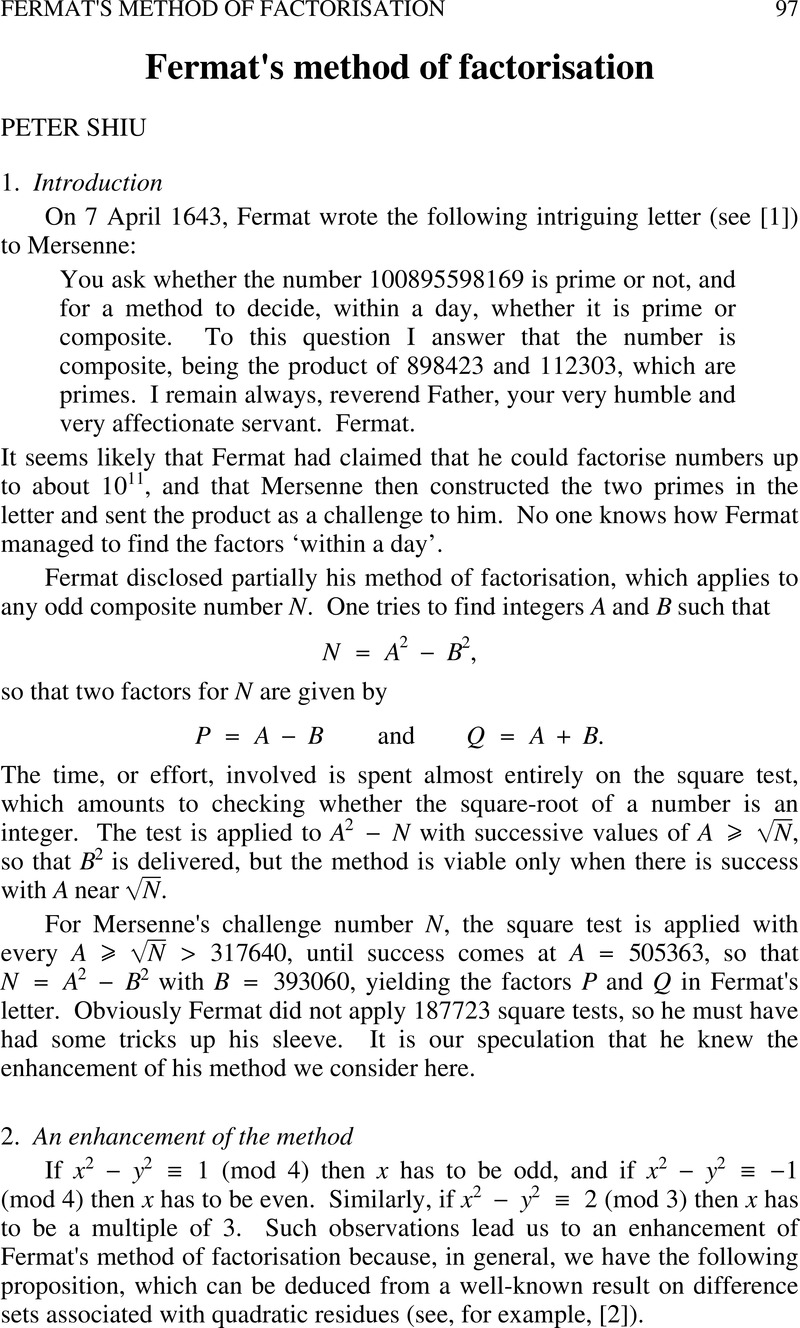Crossref Citations
This article has been cited by the following publications. This list is generated based on data provided by Crossref.
Shiu, Peter
2015.
The factorisation of 267 − 1.
The Mathematical Gazette,
Vol. 99,
Issue. 544,
p.
104.
Cameron, John B.
2016.
Mersenne’s challenge and square roots.
The Mathematical Gazette,
Vol. 100,
Issue. 547,
p.
150.
Bahig, Hatem M.
2022.
Speeding Up Fermat’s Factoring Method using Precomputation.
Annals of Emerging Technologies in Computing,
Vol. 6,
Issue. 2,
p.
50.


